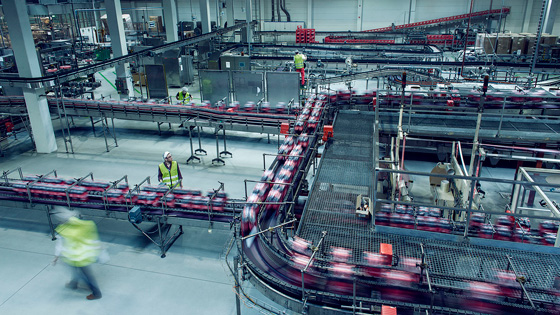
Intelligence helps in optimising industrial dependability
The critical processes in industrial plants must operate seamlessly, faultlessly and safely. If operations are disrupted or equipment failure takes place, it can lead to an unpredictable and expensive downtime in production or – in the worst case – personal injury or environmental damage.
Caverion uses efficient software to plan and optimise dependability in industrial applications. This enables modelling of dependability, cost-efficiency and factors related to optimising production. Modelling describes the reasons and relations connected with the realisation of the event under analysis. The model to be created can describe the dependability of the object, whether it is a device, a system or a process. The parts that are critical from the perspective of dependability come to the fore.
Data is collected continuously. This enables data to become more precise and the model to continue developing. Changes and new operational planning solutions become easier to implement when the impacts can be described in advance. When major 'hot spots' are identified, decisions can be made on factors such as which parts should be held in inventory, how predictive maintenance procedures should be targeted, and how often they should be carried out. Continuous measurements can also be supplemented by alerts from control rooms prior to equipment failure.
Dependability is a competitive factor
Risk management plays a major role in industry alongside efforts to boost productivity, improve quality and manage costs. The overall efficiency of production activities is affected by factors such as system reliability, maintenance and material management. Smart utilisation of information technology enables dependability and increases understanding of how costs arise and can be optimised.
IT enables forecasts of changes in various situations, such as equipment failure, and estimates of realisation frequencies and consequent costs. Caverion utilises smart solutions to develop maintenance services and to evaluate, simulate and analyse the criticality of device or process performance.
In large systems, efforts are made to identify critical parts and hubs that, if they do not function, could lead to danger or other negative consequences such as loss of production, destruction of property or environmental emissions. Inspections are carried out with a life cycle mindset: costs are evaluated over the longer term in accordance with how often the entity breaks down, whether it uses standard parts or specialised technology, and how predictive maintenance is planned.
The Industrial Internet
The automation of manufacturing industries is part of the Industrial Internet of Things megatrend as a means of increasing productivity and as a competitive factor. The Industrial Internet enables things to be measured in real time and results to be compared with historical or comparison data in an automated, rolling way. In the future, we will see combinations of diverse types of data, which will produce clear added value for users, enabling them to boost business efficiency.


